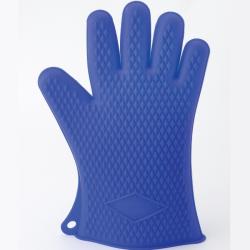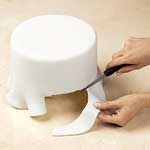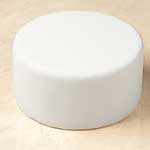I don’t know about all of you, but when I first started baking I bought every utensil, cake tin, gadget I saw. You name it, I’ve probably had it at one point. As time goes by and you bake more and more, you realise most of those ‘must-have’ things are a complete waste of money. Since getting rid of them, I now actually have free space in my baking cupboard, no more avalanche every time I open the door!
Here are 10 things I really do find essential for any baker, amateur to professional, and a few others that are essential to me.
1. Oven thermometer- no matter how new your oven is, the temperature could still be off even by a few degrees and those few degrees could be the difference between delicious and burned.
2. Timer- Most ovens come with a timer now but if yours doesn’t, you really should invest in one. They are great for when your items need a few more minutes, especially if you’re a wee bit forgetful like me.
3. Good quality oven gloves/mitts- this seems like an obvious one but a lot of people end up using a folded towel instead, which means burned fingers. Even if you don’t bake regularly, it’s still something you should have in your kitchen. You can buy silicone gloves now too, I’ve not tried them yet but I’ve heard great reviews.
4. Cooling racks- Everything that is baked in the oven has to be cooled properly afterwards, or it will continue to bake in it’s tin. The cooling rack has to allow air to completely surround the tin. If you bake a lot, it’s a good idea to have a few of these.
5. Good quality scales- these really are essential to everything you bake. If your ingredients are even a few grams out, it could mess up the entire recipe. In my opinion, digital scales are the best as they give you the exact amount, and they take up less room!
6. Measuring spoons- thesea re just as essential as scales, and are better for smaller amounts.
7. Mixing bowls- it’s handy to have multiple mixing bowls, especially different sizes. That way you can have everything weighed out before you actually start baking.
8. Sieve- most people will already have a sieve in their kitchen but a lot of people don’t bother using it because they think it doesn’t make a difference, or it makes too much mess. Sieving your dry ingredients before baking is crucial to most recipes as it adds aeration to the product.
9. Good quality baking pans/tins/sheets- this is another obvious one but one of the most important. No matter how perfect your recipe/oven/method is, if your baking equipment is too thin/too old/damaged, it will affect your product.
10. Bowl scraper- this is such a simple, cheap tool but it is great. It can be used to scrape down the mixture in your bowl to make sure it’s all mixed together properly. It can also be used to scrape your mixture into your baking pan. A spatula can also be used, but I prefer a scraper because you have more control over it.
Some extra things that aren’t essential to everyone, but can be handy:
1. Stand mixer- I love my stand mixer. If you bake a lot at home it’s the perfect gadget! Stick your recipe in to mix while getting pans ready/cleaning up etc. If you bake a lot, I definitely recommend investing in a good mixer.
2. Candy thermometer- If you fancy trying your hand at making caramel/candy/marshmallows or basically anything that requires cooking sugar, a candy thermometer is a very handy tool to have. It gives you the exact temperature of the sugar and tells you the different boiling points for jam, caramel etc.
3. Palette knife- this is a handy tool for coating cakes with icing, but it can also be used to remove cookie from sheets and removing cakes/loaves from pans. Small, angled palette knives are also great for using with cupcake icing or sugar decorations.
4. Spring action ice cream scoop- this might seem a strange one, but if you bake cupcakes or cookies a lot, it’s a great wee tool to have. It ensures that each cake/cookie is the same size and it’s a quicker method than using a spoon or piping bag.
If you have any other tools you think are essential, let us know!























